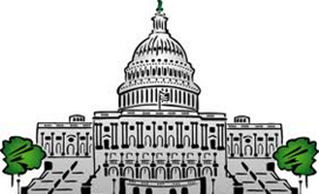This is the eleventh (and final) of the 2014 LegalTech New York (LTNY) Thought Leader Interview series. eDiscoveryDaily interviewed several thought leaders after LTNY this year (don’t get us started) and generally asked each of them the following questions:
- What significant eDiscovery trends did you see at LTNY this year and what do you see for 2014?
- With new amendments to discovery provisions of the Federal Rules of Civil Procedure now in the comment phase, do you see those being approved this year and what do you see as the impact of those Rules changes?
- It seems despite numerous resources in the industry, most attorneys still don’t know a lot about eDiscovery? Do you agree with that and, if so, what do you think can be done to improve the situation?
- What are you working on that you’d like our readers to know about?
Today’s thought leader is Craig Ball. A frequent court appointed special master in electronic evidence, Craig is a prolific contributor to continuing legal and professional education programs throughout the United States, having delivered over 1,500 presentations and papers. Craig’s articles on forensic technology and electronic discovery frequently appear in the national media, and just ended nine years writing a monthly column on computer forensics and eDiscovery for Law Technology News called Ball in your Court. He currentlyblogs on those topics at ballinyourcourt.com.
As usual, Craig gave us so much useful information that we decided to spread it out, so today is Part 1 of the interview and tomorrow, we will post the rest!
What significant eDiscovery trends did you see at LTNY this year and what do you see for 2014?
The most significant trend that I saw at LegalTech was the absence of a new direction. Honestly, if you had blindfolded me and put down in LegalTech 2014, I could have not told you that it wasn’t LegalTech 2013 and I would have been challenged to have distinguished it from LegalTech 2012. I’ve probably been to fifteen or sixteen shows and I don’t think I’ve ever seen one that was so much a clone of a prior year and failed to reveal any innovation as patently as this LegalTech. That’s not a lack of optimism on my part, but truly a recognition that everyone was showing something that was, at best, an incremental refinement of what they had been offering. That’s not to say that the eDiscovery tools that I looked at were not better than the eDiscovery tools that I looked at last year. For the most part, many of them had refinements that were indicative of vendors listening to their clients.
One thing I’m surprised that I didn’t hear more about at LegalTech is BYOD (bring your own device). When it comes to privacy, corporations tend to say “you’re on our premises, you’re using our devices…oh, wait a minute, you were using our devices, but now we’re making you bring your own device”. We should be talking about how we will’ successfully integrate BYOD into our “we own it, so we control it, so we can look at it” mindset. The notion that we’re going to be able to monitor people’s devices through agents – that’s ten year old technology with modest uptake. By the time we get it in place, we’ll be way past it.
As for trends in general, I had dinner with Browning Marean the other evening. Browning is “everyone’s favorite uncle” in eDiscovery – he’s a thoughtful and witty fellow with DLA Piper, the world’s largest law firm that no one has ever heard of. Browning said something to me while we were discussing his time serving in the Navy in Vietnam and he used the phrase that the Navy is always “fighting the last war.” I think “Generals always fight the last war” is the famous line. That’s where we are in eDiscovery. The product refinements that I’m seeing are designed to fight the last war. That’s a serious concern. Because when one refines their ability to do things that are increasingly less and less relevant, they aren’t preparing to fight the battle they’ve got to fight. I’m seeing refinements to software and workflows that are geared to a type of ESI that, unbeknownst to many at LegalTech, is disappearing. I saw almost no one that had a coherent solution for cloud collection and processing or for handheld devices. And, if you aren’t going to be where the evidence lives, you’re not going to be of as much value. Instead, I saw a lot of self-congratulatory back slapping from both attendees and vendors about how well they were prepared to win the last war.
The fact that there was so little evidence of genuine innovation is expressed in many ways. We are still looking at an entrenched generation of lawyers who are persuaded that they can keep the “status quo” in place and continue to do things the way they’ve always done them, albeit with a veneer of technology. Sadly, I’ve become convinced that where I thought we could bring them along and educate them, I’m realizing that they will simply have to “shuffle off the mortal coil” of law before we realize the efficiencies and changes that are necessary to really use electronic evidence to its highest and best purpose. We could salvage and re-purpose their expertise but, by-and-large, they’re resolutely unwilling to re-educate themselves for a digital world.
With new amendments to discovery provisions of the Federal Rules of Civil Procedure now in the comment phase, do you see those being approved this year and what do you see as the impact of those Rules changes?
The question in my mind is whether they will receive alterations that will improve them and, if they do see changes, at what point are the changes sufficiently substantive to require them to re-initiate the public comment process on a revised set of proposals? People being people and government being government, there will be a lot of reluctance to let the proposals be altered to an extent that they should be for fear that will trigger the need to go through a new comment period. So, there will be a lot of ingenuity applied to avoid changes that reflect themselves too substantively in the proposed language. That’s an impetus for the rules changes to pass with little change save that reflected in the commentary.
I see the changes being positive in many ways. There are certainly some tweaks to the rules that are brilliant. I remain concerned, as many do, about the change to Rule 37(e). Certainly, the old 37(e) was a stillborn and the new rule is quite the opposite. I wish it did not manifest such a mistrust of members of the federal judiciary in terms of their ability to regulate litigation and, when necessary, to punish malfeasance. I believe strongly that our existing cadre of judges is very capable of restraint when it comes to sanctions, and generally manifest a rational and measured approach in terms of analyzing a state of affairs and deciding whether or not to sanction. And before you ask, I most definitely include Judge Shira Scheindlin in that group. The sanctions cases most discussed of late—like Sekisui—when you look at them closely, they are very measured and minor in terms of what they do. Even the dreaded “Adverse Inference Instruction” in the latest iterations has been so weak and deferential to the opinions of the jury that it has much less tendency to have an impact comparable to those Judge Scheindlin issued ten years ago in Zubulake. People don’t look at those adverse inferences as closely as they should – if they did, I think they would realize that they are a very measured response.
I think that my greatest concern about the rules is something that has not been discussed. We are at a juncture where we need more—not less– of the much reviled “discovery about discovery.” We must approach discovery with increased transparency and scrutiny of process–making that routine would have a significant effect on reducing the cost and complexity of eDiscovery. Yet, we have some fairly powerful corporate lobbying efforts afoot to clamp the lid down more tightly on such things and take away the needed translucency into process that allows you to say “hey, don’t do it that way” before a lot of money goes down the drain. I’m amazed at how many people on “the other side” (whatever side that is) are so tied up with misperceived work product privilege rights that they are arguing that they should be able to complete a defective eDiscovery effort at enormous cost to their client before the other side can say “stop, you’re doing it all wrong.”
I realize that the conversations between opponents have not been unguarded and are not always as constructive as they should be. They’re way too combative. People are still so afraid that they react from fear rather than from knowledge. Nonetheless, there are certain aspects of an eDiscovery effort – the mechanisms of collection, culling, search, sources, structure of databases and, above all, forms of production (where we are finally and happily starting to make some progress) – that are so fundamental to integrity of process that they must be discussed up-front. Those things must be hashed out before any significant money is spent on the collection, processing, review and production process.
Yet, there is a machismo out there reflective of outdated Sedona notions of “the other side is always right, no matter how wrong they are.” The producing party is always right, even if they don’t know their butt from a hole in the ground when it comes to eDiscovery. The consequence of that, the ego, the machismo of “you’ll see what I give you when I give it to you, and only then may you object” is such a waste of effort. There are just some things that are so irretrievable that, unless you deal with them before they happen, they’re faits accompli to failure. This idea that we’re going to waste months and millions of dollars to visit a broken production on an opponent and only then does the opponent get to challenge it is just ridiculous. It’s wasteful and shameful, and I’m frustrated that people don’t take a step away from their egos and say “this transparency thing is not a weakness, it’s a strength,” and instead seek to show off the wisdom and defensibility of their plan. That let’s the other side can take shots at the plan while it’s still easy, fast and cheap to fix it. But, no, they just want to do everything twice; and as long as people continue to be paid by the hour, doing everything twice is profitable for everybody but the litigants.
Stay tuned for Part 2 tomorrow!
And to the readers, as always, please share any comments you might have or if you’d like to know more about a particular topic!
Disclaimer: The views represented herein are exclusively the views of the author, and do not necessarily represent the views held by CloudNine Discovery. eDiscoveryDaily is made available by CloudNine Discovery solely for educational purposes to provide general information about general eDiscovery principles and not to provide specific legal advice applicable to any particular circumstance. eDiscoveryDaily should not be used as a substitute for competent legal advice from a lawyer you have retained and who has agreed to represent you.








